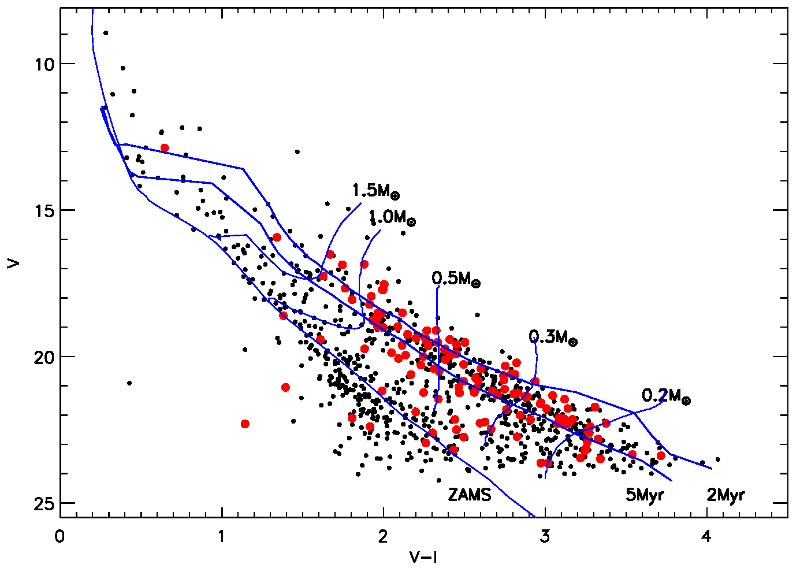| EPoS Contribution |
|
Stellar Feedback and star formation activity in high mass star forming regions
Jessy Jose KIAA, Beijing, CN | |
| One of the unsolved questions of star formation concerns the effect that environment, in particular the stellar feedback may have on the subsequent star formation process. Numerical simulations show that the effect of stellar feedback in a massive star forming region depends upon several factors such as the amount of input radiation and wind energy, local interstellar medium conditions etc. As a result, the feedback effect on star formation activity may vary from region to region. In this context, we use deep optical/near-IR/mid-IR imaging of distant (~2 kpc) star forming regions to obtain a census of YSOs (e.g. see figure) and analyse gas and stellar density structure. The combination of column density maps and stellar census is used to estimate the star formation efficiency and star formation rate of these regions. With the uniform data sets, we analyse how the star formation properties at different parts of individual regions vary with respect to the dense gas fraction as well as the amount of input energy from massive stars. Our analysis suggests that the stellar feedback from massive stars influence only to its more localised neighbourhood and may not have a measurable effect on the global star formation activities of the regions in this study. | |
 | |
| Caption: V/(V-I) color-magnitude diagram of one of the star forming regions (Sh2-234). The red circles represent the candidate young stellar objects identified based on their near-infrared excess property. The zero-age-main-sequence and pre-main-sequence isochrones of 2 and 5 Myr as well as the evolutionary tracks for various masses are also shown. The distribution of candidate young stars shows a well defined pre-main- sequence between 2-5 Myr. | |
| Collaborators: G.J. Herczeg, KIAA, CN J.S. Kim, UofA, US M.R. Samal, NCU, TW |
Suggested Session:
Stellar Feedback |

